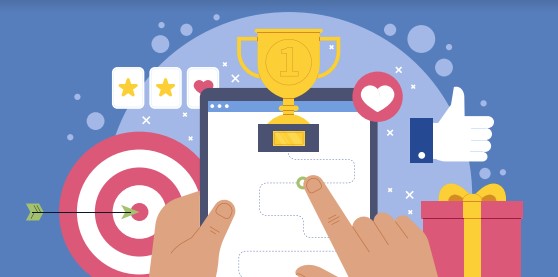From the earliest days of our existence, humans have been driven by the pursuit of rewards. Whether it was the thrill of the hunt, the satisfaction of a well-cooked meal, or the joy of communal storytelling, our brains have evolved to seek out and thrive on rewards. In today’s digital age, this innate wiring for rewards has been harnessed through gamification, a powerful concept that leverages our natural tendencies to motivate, engage, and educate.
Let’s explore how humans are wired for rewards and how gamification taps into this ancient drive to create positive outcomes in various aspects of our lives.
Understanding the Brain’s Reward System
 To comprehend how humans are wired for rewards and gamification, we must first delve into the fascinating world of our brain’s reward system. The primary players in this system are dopamine, the brain’s “feel good” neurotransmitter, and the nucleus accumbens, a region of the brain associated with pleasure and
To comprehend how humans are wired for rewards and gamification, we must first delve into the fascinating world of our brain’s reward system. The primary players in this system are dopamine, the brain’s “feel good” neurotransmitter, and the nucleus accumbens, a region of the brain associated with pleasure and
motivation.
When we encounter a rewarding stimulus, such as a tasty meal or a compliment, our brain releases dopamine. This chemical signal is
responsible for the feelings of pleasure, motivation, and reinforcement of certain behaviors. It acts as a biological carrot, encouraging us to repeat the actions that led to the reward. This is a survival mechanism, encouraging behaviors that are beneficial to the individual and the species.
The Connection to Gamification
Gamification is the art and science of applying game- like elements to non-game contexts, such as business, education, or personal development. By doing so, it taps into our brain’s reward system and leverages our innate desire for achievement and recognition. Let’s explore how gamification capitalizes on our reward- seeking nature:
- Clear Goals and Feedback: Games offer players clear objectives and instant feedback on their performance. This feedback can be in the form of points, levels, badges, or other rewards. Similarly, in gamified applications, setting clear goals and providing immediate feedback encourages users to engage with a task or system.
- Progression and Mastery: Games often feature progressive difficulty levels, challenging players to continually improve and master their skills. In the real world, this translates to learning and self-improvement, which can be achieved through gamification by incrementally increasing the complexity of tasks.
- Social Engagement: Humans are inherently social creatures, and we derive pleasure from interactions with others. Gamification often incorporates social elements such as leaderboards, competition, or collaboration, which can boost motivation through a sense of community.
- Intrinsic Motivation: Gamification seeks to activate intrinsic motivation, the desire to engage in an activity for its own sake. This contrasts with extrinsic motivation, where one is driven by external rewards or punishments. By making tasks more enjoyable and meaningful, gamification taps into our inherent intrinsic motivation.
Gamification in our everyday lives
Gamification exists everywhere. A few examples are:
- Education: Gamified learning platforms make education more engaging and interactive, motivating students to complete assignments and acquire new skills.
- Fitness and Health: Fitness apps use gamification to encourage regular exercise and healthier habits by setting goals and rewarding achievements.
- Business and Marketing: Loyalty programs, customer reviews, and sales promotions often incorporate gamified elements to engage customers and foster brand loyalty.
- Employee Engagement: Gamification can boost employee productivity and satisfaction through performance-based incentives, recognition systems, and friendly competition. Insert ReviewBuzz rewards here.
Humans are wired for rewards, and gamification capitalizes on this inherent drive to motivate, engage, and educate. By leveraging our brain’s reward system, gamification transforms mundane or challenging tasks into exciting and fulfilling experiences. As our understanding of the human brain and the potential of gamification grows, it is likely that we will continue to find innovative ways to harness this ancient wiring for rewards to improve various aspects of our lives. So, whether you’re striving for personal growth, business success, or societal change, consider how gamification can unlock the potential within us all, making the journey more enjoyable and rewarding.


